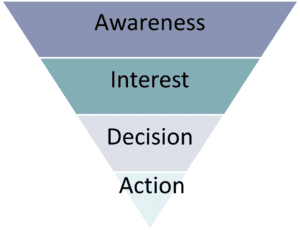Delivering the right message, using the right medium, to the right person, at the right time in order to accomplish a goal.
What (goal): Your goal will drive all of your marketing efforts going forward
Who (audience/market): It’s important to identify the most important groups of people to influence and target a message to them. When you can segment your audience into smaller groups of more similar people, you can create messages that will resonate better and will give you better results. They will feel like you know them (that you “get them”) and that they are important.
Remember to delve deeper into your target audience and not simply say “members” and “non-members.” Our community is far greater and more diverse than their membership status.
How (touch points): Examples: mail, email, phone calls, text messages, face-to-face, podcasts, videos, social media, presentations.
Remember the Marketing Rule of 7: A person needs to “hear” a message seven times before they take action.
Remember: Each audience of interest may need different touch points. Use available data on that audience to select the appropriate “How” to market to them.
When (milestones): Time your message to be delivered when your audience is most receptive to hearing the message and acting on it. For example, registration deadlines, expiration dates, when new information is announced, etc.
Where (delivering message): Deliver your message to the places where your audience is, and where they are likely to receive it. For instance, does your audience read email, what social media channels do they use, where can you catch them in-person?
